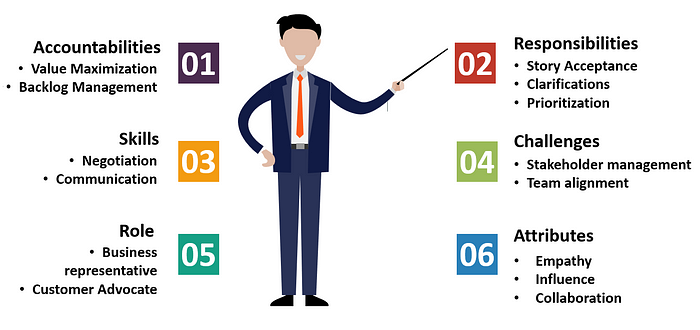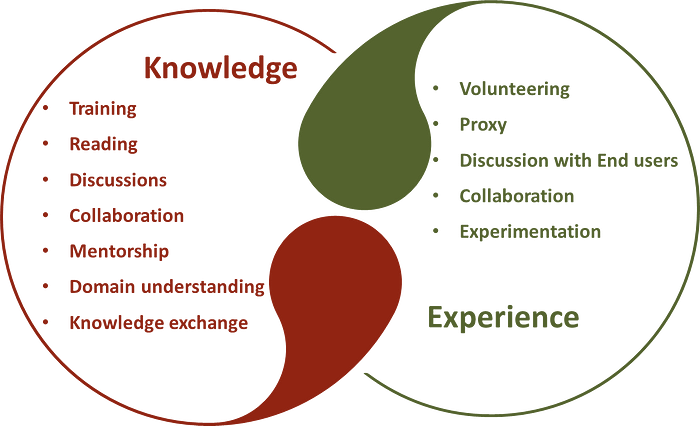“Some of my team members are interested in knowing more about being a Product Owner. Can you mentor them?” a senior member asked me recently. Of late, I have seen that several people want to explore the option of becoming a Product Owner. While some are genuinely interested in the craft, others are simply in it for the market’s open prospects. But, the nuances of Product Ownership are probably not very clear to many people. This is especially true for someone who is starting their Product Owner journey. So, let’s explore how one could do that.
A Product Owner is a part of the Scrum Team. The Product Owner is a business representative and voice of the customer for the team. The competencies of the Product Owner range from Problem, Product, Market, Business, and Process to People. S/ he is accountable for the following:
- Maximizing the value of the product
- Effective Product backlog management

Let us look at a step-by-step approach towards becoming a Product Owner in its truest sense. To start with, let us categorize the requirements under two different headers viz (a) Knowledge and (b) Experience. The first part deals with understanding the responsibilities, challenges, and required skills. The second part is all about practising the trade with the knowledge gained. Let us look at each of these in greater detail below:
Knowledge
One of the fundamental tasks of the Product Owner role is the curiosity for solving problems. To do this, one needs to understand what Product management is and the frameworks using which the solutions are implemented. The Product Owner should see the bigger picture and guide the team towards achieving beneficial outcomes. Given that Value maximization is core accountability for a Product Owner and Value is an abstract term, it is important to gain knowledge that helps bring clarity. How does one acquire knowledge? There are multiple steps in this.
- Attend a training session with a professional trainer. This is essential to understand the right way to perform the duties required of a Product Owner. Check out these upcoming classes from tryScrum to gain a preliminary understanding.
- Read various blogs, articles, and books to understand the art of Product Management and the Scrum framework.
- Talk to experienced Product Owners and understand how they have evolved in their roles.
- Collaborate with internal developers to understand their expectations from the role.
- Seek a mentor and discuss various stages of product development. Review various frameworks at different points. Some of the example stages include Discovery frameworks, prioritization frameworks, and roadmap development.
- Exchange Knowledge by attending various meetups and webinars. Gain insights from various experienced people as well as like-minded people.
- Understand more about the domain and the users—practice empathy for users’ problems.

Experience
Now that you have gained knowledge through one or more of the above steps, it is time to gain real experience. There are various ways of gaining such practitioner experience. Some of them are:
- Volunteer internally for any opportunities as a Product Owner and gain exposure to the role. Use the experience to seek opportunities in your organization as and when they become available.
- Play a Proxy role to help develop the right product by collaborating with the developers to focus on the problem and not the solution.
- Discuss with end-users of your product whenever there is a chance of doing so. Facilitate their concerns and work with relevant stakeholders in prioritizing the problems to be solved.
- Try finding an external volunteering option that doesn’t have conflicting interests to your organization (if you are currently working even in a different role). Consider working for experience and not for pay.
- Collaborate within Communities of Practice and help others solve their challenges by asking the right questions and contributing to value creation.
- Pick up any product or application that you like. Get to the bottom of what problem the product is trying to solve and if it is able to do so. Come up with another hypothesis around the problem and validate it with an MVP.

The above is not an exhaustive set of things for realizing your Product Owner goal, and there could be more. But it gives you a start. Do not be afraid to experiment or fail. Along the way, have fun while learning and practising.
If you think of more ways to become an effective Product Owner, comment and let the wider forum know.


